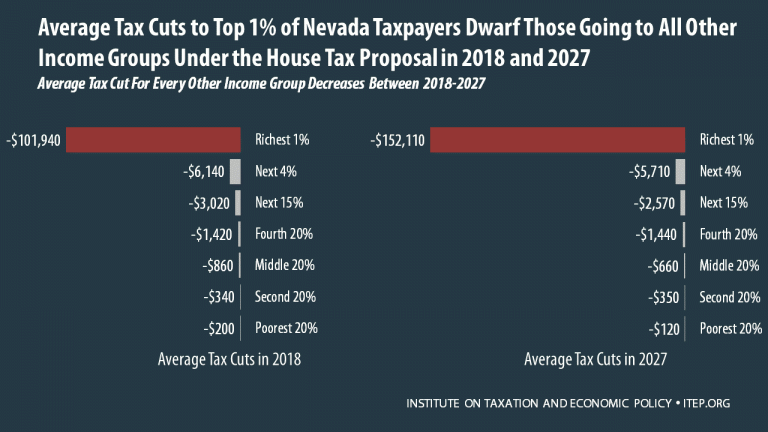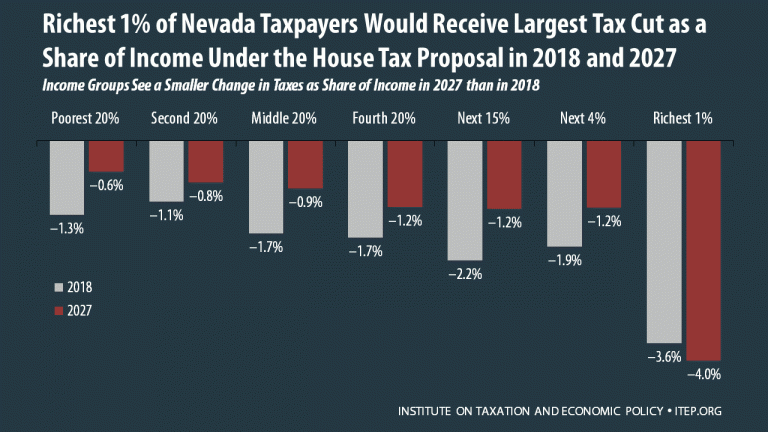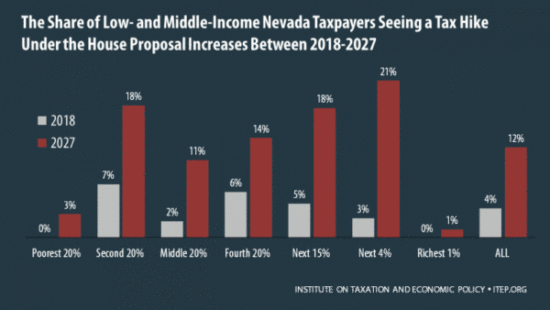Indy Outlook: Under the GOP tax plan, some cuts are more equal than others

So, there’s a conversation about tax reform going on. How would Nevadans fare under the key proposals from Washington?
The Indy already did a great in-depth explainer on the original outline of the plan. Here’s the bullet point highlights of the proposed changes in the Tax Cuts and Jobs Act:
- Condenses the seven income tax brackets to four. The lowest rate rises from 10 percent to 12 percent while the top rate would remain 39.6 percent
- Standard deduction roughly doubles to $12,200 for individuals, $24,400 for married couples, and $18,300 for heads of household
- Eliminates personal exemption eliminated and replaces with $300 personal credit
- Child tax credit increases from $1,000 to $1,600
- Caps deductions for state and local property taxes at $10,000
- Eliminates itemized deductions for medical expenses, student loan interest, and tax credits for adoption
- Eliminates alternative minimum tax
- Starting in 2018, the estate tax would only apply to individuals with at least $11.2 million in assets, or $22.4 million per married couple. The estate tax is eliminated in 2024
- Home mortgage interest deduction would only apply to homes worth $500,000 or less, down from $1 million
- Corporate income tax rate decreases from 35 percent to 20 percent and caps “pass-through” business income at a 25 percent rate
There are also a couple of items that have more clear implications for Nevada – reducing deductions related to gambling and ending tax-exempt municipal bonds for professional sports stadiums – and this publication was quick to highlight those and their implications. But when you put the rest together, what does it all mean?
In the effort to promote, tweak, or kill the proposal, a lot of interest groups are putting out analyses of projected growth, deficit and debt increases, and the positive or negative impacts of various specific pieces. We turn to the Institute on Taxation and Economic Policy, a non-profit non-partisan research organization with a focus on modeling how these combined proposals will affect Americans at various income levels.
ITEP makes it clear how difficult it can be to analyze this mix of changes. Some are aimed at the middle class while others are aimed at the wealthy, some at small businesses and others at large corporations, some phase down over time while others are permanent and still others increase over time. However, here are a few key takeaways:
- Whether as a share of the tax cuts, share of income or in absolute dollars saved, wealthier Americans benefit the most under the proposal, and those benefits shift more towards the wealthy over time. While top earners pay disproportionately more taxes currently, the ultimate outcome of this bill will be to make the system more fair for them – and that means everybody else will play some role in picking up the tab.
- Foreign Investors also benefit heavily – their $47 billion in projected gains is more than the combined bottom 60 percent of earners would receive.
- Depending on a range of circumstances, you may see your taxes rise, fall, or stay flat. However, the evolution of the proposals results in them becoming less sweet over time. Roughly 1 in 4 middle class families would see a tax hike by 2027.
You should head over to the ITEP website for the charts, if nothing else. There are far too many to include here. However, I did pull a few from their Nevada analysis. Our state would see a disproportionate benefit to the top 1 percent of earners, even compared to the national average:


The good news? Fewer Nevadans will see their taxes rise than the average American. Still, unless you’re very poor or very wealthy, you’re facing between a 1-in-10 and 1-in-5 chance that your tax burden will be higher in 2027. Those aren't great odds:

This plan is going to change – the Senate is already making tweaks as they look at securing a path to 51 votes. The difference between a tax break and a tax hike may come down to how important some of the deductions – like student debt or medical expenses – are to your family. Whether you look to personally gain or lose under the plan, whether you think a particular change is morally right or wrong, whether you support or oppose the ultimate goal of shifting the tax burden downward from top earners: Now’s the time to get educated and speak up. That’s what democracy is all about!

John Restrepo, the author of this column, is an economist and Principal of RCG Economics. He is an expert in regional economics and forecasting in Nevada and the Mountain West.
Disclosure: John Restrepo co-publishes the Stat Pack, a client of the communications consulting firm owned by The Nevada Independent’s managing editor, Elizabeth Thompson.